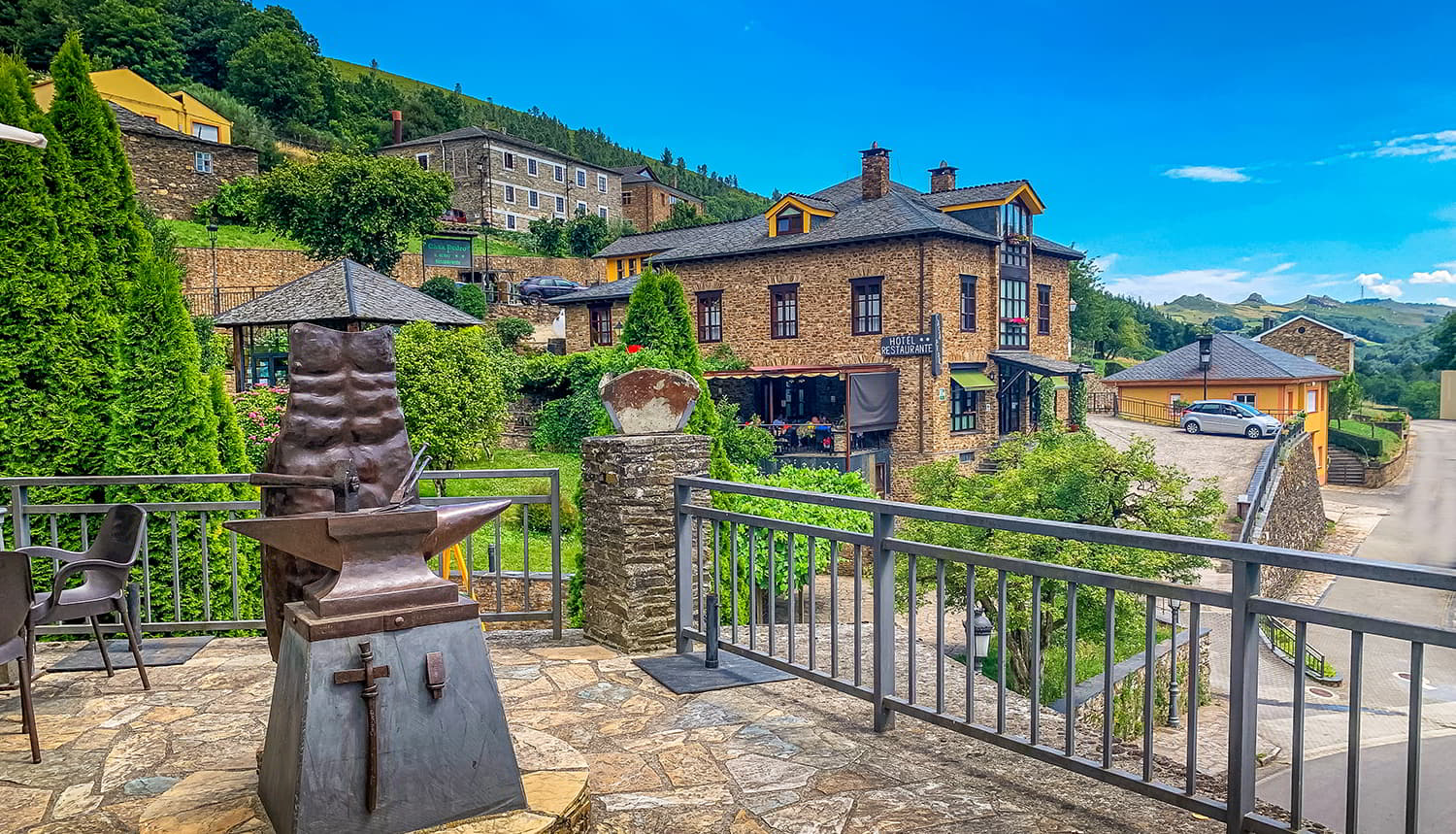Back Top 10 things to see and do in the Oscos-Eo Region

The 10 most interesting things to see and do in the Oscos-Eo Region
The Oscos-Eo region embodies the essence of western Asturias, and offers you a thousand landscapes and plans to enjoy your best leisure time.
The Oscos-Eo region embodies the western essence of Asturias. Its condition of bordering territory with Galician lands, gives it that multicultural point of the Iberian northwest that makes it even more exotic and different.
Of the 7 Biosphere Reserves in Asturias, it is the only one with a coastline, and what a coastline it is! It is dotted with beautiful cliffs and beaches, such as Penarronda, which not only delights bathers and tourists, but also the pilgrims who make the Camino de la Costa.
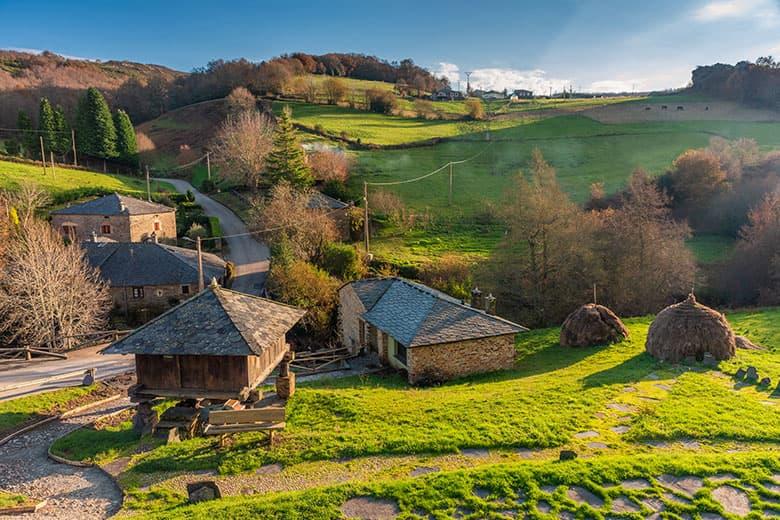
But this region is not only a treasure trove of natural beauty and scenery, in the form of passes, mountains, valleys, routes, rivers and waterfalls, to give just a few examples. It is also a great cultural reserve: mallets and forges, museums, palaces, monasteries, craftsmanship of knives and looms... A whole world of traditions that has reached the present with solvency and good health, and that will allow you to fully enjoy a universe of unrepeatable moments and experiences.
Join us on this fascinating journey through the 10 best things to see and do in the Oscos-Eo region!
Two fishing villages linked by a promenade
The Oscos-Eo region has two fishing villages that are among the most beautiful in the whole of the Cantabrian Sea. They are Figueras and Castropol. Both with their stately homes and palaces, their winding streets, their taverns and seafood restaurants, their marinas, their views of the estuary and the sea.

An ideal way to get to know both is to walk along the coastal promenade that joins them. There are eight comfortable kilometres, with the added attraction that the return trip can be by boat, so you can enjoy even more the many charms and corners of the always surprising Eo estuary, which is also a nature reserve and a unique place for birdwatching.
Oysters from the Eo, ecological where there is none
Oysters from the Eo are delicious, and without a doubt they are one of the unmissable delicacies that you must try in this region. The truth is that it is no coincidence that they are so tasty, and it is because both the way they are cultivated and the place where they are grown give them a special quality.
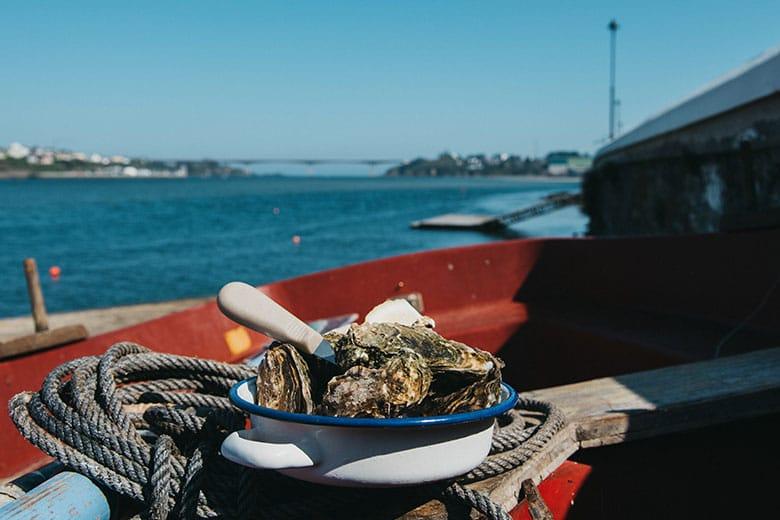
They are reared in sacks anchored to tables 150 metres from the seashore, which emerge at low tide and are manually turned over at low tide. In this way, part of their life is spent out of the water, and this makes their musculature more vigorous so that they can remain fresh for longer. This is what Eduardo Martín, biologist and founder of the company Acueo, which organically cultivates this marine delicacy in the Natural Reserve of the Eo estuary, tells us.
The company itself has a small terrace where you can enjoy them while you contemplate the estuary and its wide inlet, as well as the town of Figueras, while listening to all the details about their cultivation.
A pleasure of the gods!
The route of the Meredo mallet
One of the most popular and pleasant routes in this region is that of the mazo de Meredo, in the council of Vegadeo. The route starts in Piantón, a charming village that was once the capital of the council, and where we recommend a stroll around the square and a visit to the church.

Once you cross the Roman bridge, turn left and head towards Arcilo. From now on you will be accompanied by the forest and streams.
From Arcilo, you will go to Cobre and from there to Meredo. The mazo cannot be visited at the moment, but it is still worth doing the route.
There, you can recover your strength in the recreational area, and at the same time you will learn a little more about the tradition of iron and the use of the energy of water power, through the set that makes up the mallet and the mill.
An idyllic route, where your travelling companion is the river Suarón, a tributary of the Eo. You will also pass very close to the manor house of Sestelo, and you will have good views of the valley, enjoying a very humanised landscape of meadows and farmland.
A simply unforgettable walk!
A visit to the farm
You can live the life of a real farmer. In this region it is really easy thanks to the Amaido farm, in San Tirso de Abres.
It is an extension of 12 hectares of land, divided into two halves: in one half is the native forest, where the Bermeyan goats and Celtic gochos live together. In the other there is a village house, a rural campsite and 4 wooden cabins, as well as a series of organically certified agricultural crops, an orchard of cider apple trees, also organic, oveyas xaldas, pitas pintas, geese, ducks, ponies, etc., as well as a restaurant.
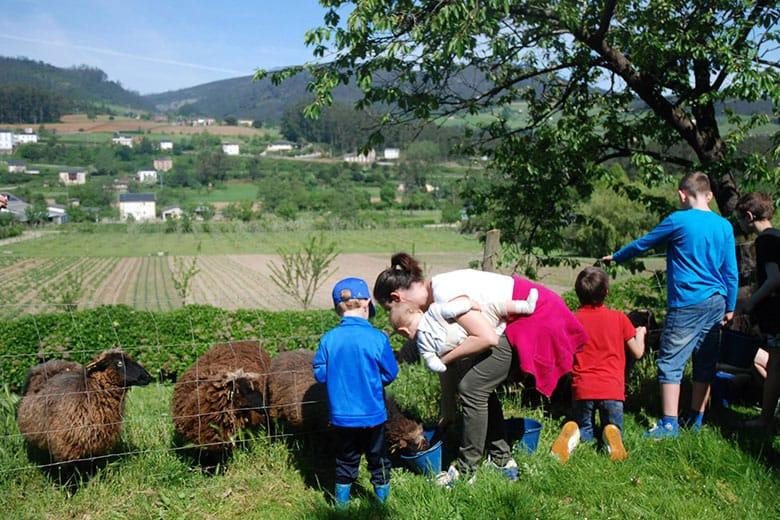
Amaido is a harmonious ensemble that will allow you to discover rural life and the peasant worldview, in a friendly everyday environment, where you can take part in workshops with seasonal work - sowing, harvesting, etc. -, or bake bread, make cider, take part in the pig slaughter or in an amagüestu (a gathering to taste chestnuts, etc.). Or simply try the extensive menu of local flavours in the restaurant.
An exciting experience!
A paradise of sea and river beaches
The coastline of the Oscos-Eo region is one of the most striking for its beaches and cliffs. From the mouth of the Eo estuary itself, with its different beaches, to sandy areas of great age and beauty such as Penarronda, in Castropol, the coastline of this area will give you many joys in the form of breezy baths, sun and sea, and paths along the coast.

But not only will you have sea beaches, but this region, where rivers and streams are omnipresent, also treats your five senses with river beaches as charming and beautiful as Ferreira, in Santa Eulalia de Oscos, where as well as having a recreational area, you can rent tourist canoes for pleasant and easy trips around the reservoir.

So you can choose between the sea and the river!
Refreshing waterfalls
Water is very present in the Oscos-Eo region, so it is not surprising that it is home to some of the most beautiful and refreshing waterfalls in Asturias.
They are often idyllic places that you discover in the middle of a route, or they are the brilliant culmination of a peaceful walk. Here are four examples.
The Cioyo waterfall, in Castropol, is an incomparable spot, which you will reach after a route of some difficulty but which turns into an almost magical adventure between forests, rivers and waterfalls, until you find the great waterfall, which looks more like a refuge for mythological beings.

The A Salgueira waterfall is one of the great surprises of the Water Route, in Taramundi, where a comfortable circular route of about 13 kilometres will take you into the world of waterworks, in a setting of chestnut and oak forests, and fairytale villages such as Os Esquíos and As Veigas.
A Seimeira, in Santa Eulalia de Oscos, is another of our watery jewels in the Oscos-Eo region. With its thirty-metre drop you will find it impressive. Just as impressive is the route to it, leaving from the village of Pumares, accompanied by the river Agüeria, and passing through marvellous riverside woods. Ancadeira and the Desterrado Valley are other places that will mark your way to A Seimeira.
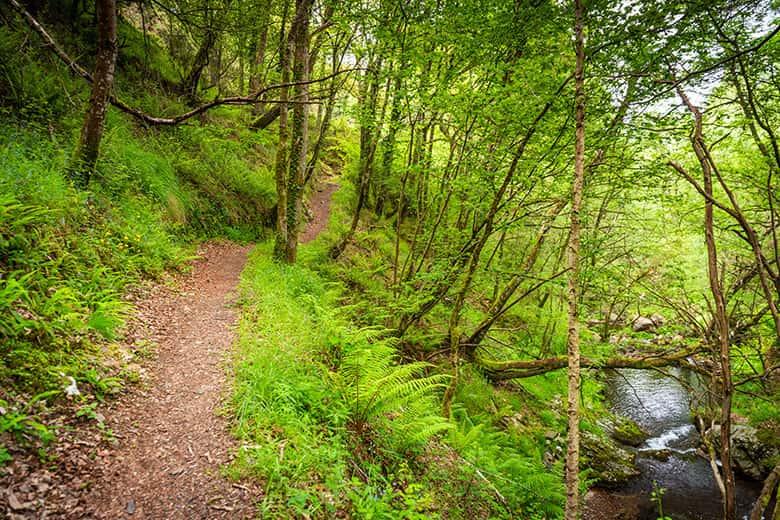
They say that the Morlongo waterfall, in Villanueva de Oscos, is one of the most beautiful waterfalls in Asturias, as well as having the advantage of being accessible after a short walk without any difficulty. In fact, it is an ideal natural space to enjoy a day of relaxation in the most healthy and peaceful way. So now you know, if you go into Los Oscos through the Garganta pass, you will find it almost at the foot of the road.

But you can also enjoy other options for cooling off, such as the swimming pools with spectacular, natural and healthy surroundings, like the one in Santalla (which appears in the photograph and will be closed in 2022), and also the swimming pools in Taramundi, San Martín and Villanueva de Oscos.
The Oscos-Eo region is ideal for cooling off!
The county of a thousand routes and paths
The Oscos-Eo region is magical par excellence and part of this magical universe are its many paths and trails, which multiply like the biblical loaves and fish...
For this reason, there are many and varied routes that you can enjoy in Oscos-Eo, and all of them have a natural and cultural component that will make your heart beat faster.
One of them is the Water Route in Taramundi, where magic is again the word that best describes it. Here you will discover the gallery forests, and between paths and small roads, you will arrive at meccas of ethnography and ingenuity such as O Mazonovo and Os Teixóis. The Salgueira waterfall and a fairytale village such as As Veigas complete a unique journey.

El Forcón de los Ríos, in Santa Eulalia de Oscos, is another of those memorable routes, where nature and ethnography go hand in hand. It starts right next to the cultural centre of Santalla, heading towards Millarado, through the woods, and you will come across some farmhouses. After As Poceiras and continuing between mountains and rivers, you will reach the confluence or forcón of the rivers Villanueva and Barcia, and it is precisely this place that gives the route its name. After passing through emblematic villages such as A Valía, Caraduxe or Ferreirela de Riba and de Baxo, you will reach the capital of the council again.

On the other hand, the route of the 'estraperlo', in Vegadeo, is a perfect combination of the clandestine spirit of the 'estraperlistas' and the spiritual bohemia of the pilgrims. This route, which begins in Louteiro, follows a route used in the past by pilgrims on their way to Santiago de Compostela and smugglers, who avoided the main roads to pass products from Galicia to Asturias. The route runs along the banks of the river Eo, allowing you to enjoy the flora, fauna and incredible landscapes. There are still wharfs in Abres, and in A Sela de Murias there is an old inn that used to welcome pilgrims and muleteers. On the final stretch to Louteiro, a forest and a green blanket of bushes will accompany you to the end of the route.
And of course, this region is an active witness to the life of the cultural and spiritual itinerary par excellence: The Way of St. James. For more than a thousand years, the Coastal Way has passed through its landscapes, through the lands of Castropol, Vegadeo and Abres, to lead the pilgrims on their way to Compostela.
Enjoy the thousand paths and trails of Oscos-Eo!
The universe of the ferreiros
The Oscos-Eo region could well be called the forgers' paradise. Both Taramundi and Los Oscos treasure some places where there are forges and ferreiros. Places full of magic, where people live in a simple and healthy way, just like in the old days.
In Taramundi you cannot miss Os Teixóis, an ancient hamlet with numerous hydraulic forges, all working as they did centuries ago. So, from a mallet to a potter's wheel, passing through the forge, you will travel back in time in a single glance. What's more, once in Taramundi you can take the Ferreiros Route, which is only 6 kilometres long and takes you from the capital of the council to the village of Pardiñas, where the Museum of Cutlery is located .
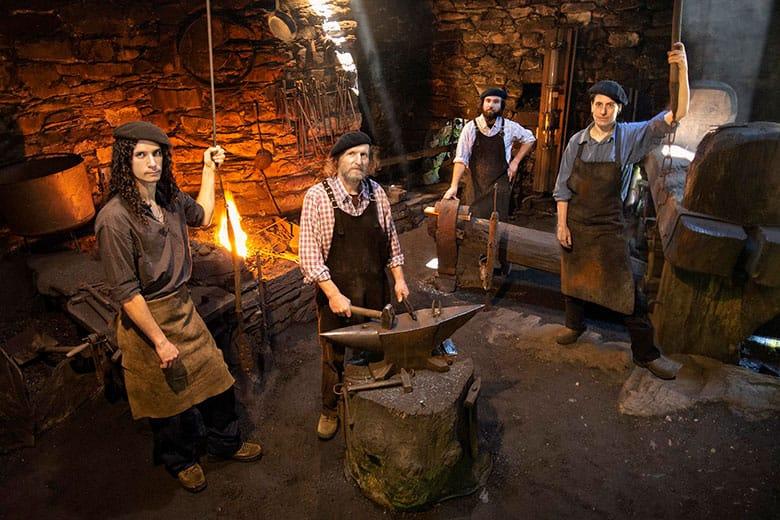
The Oscos are another unavoidable reference when we talk about the culture of the ferreiros, and you will be able to see it in situ in a place as special as El Mazonovo, in Santa Eulalia de Oscos, where the new generations of ferreiros show all the secrets of the trade of fire, as they learnt it from their ancestors.
Monasteries and palaces steeped in history
This region is rich in historical and cultural heritage, and good proof of this are the many mansions, palaces, churches and monasteries scattered throughout this territory.
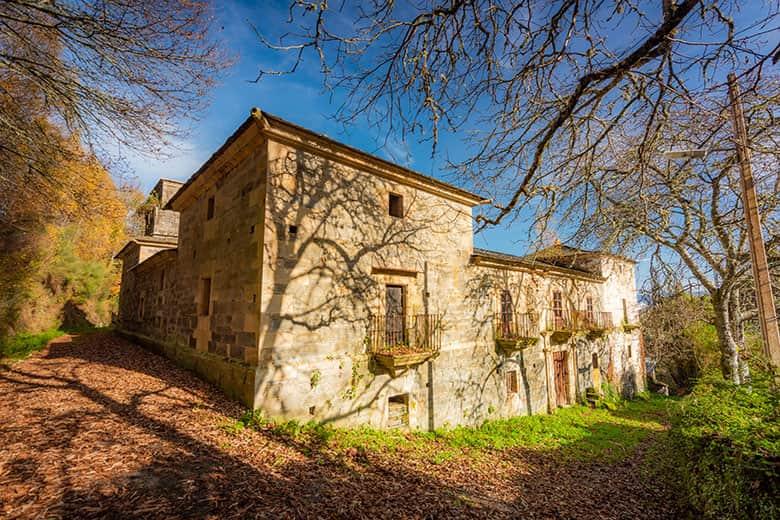
As a highly motivating suggestion, we invite you to discover the Mon Palace and its route, in the council of San Martín de Oscos. This route starts in the village of A Revoqueira, very close to the capital of the council, where you will be able to see examples of well-preserved popular architecture, and where you will also see pasture land with its livestock. You will then head into the local forest until you reach Mon, where you will be captivated by the majesty of its palace, one of the finest examples of Baroque and stately architecture in Asturias. You will also come to the chapel of Santa Marina and the secluded mazo de Mon. In this area, you will be delighted by the surroundings of the river Ahío, characterised by its riverside woodland.

And of course you can't leave Los Oscos without a visit to the Monastery of Santa María de Villanueva de Oscos, a jewel comprising a Romanesque church facing north and a beautiful south-facing courtyard. Built in the 12th century, it was first occupied by the Benedictine order, and later by the Cistercian order. Over time it was remodelled and enlarged, especially in the 17th and 18th centuries. Today its uses are mainly cultural, and the truth is that its powerful presence gives Villanueva an air of mystery and legend.
And approaching the coast of this region, you can - in this case better by car - take a look at the Vegadeo Palaces Route, where you have interesting buildings such as the 17th-century Casa del Rego, in Piantón; in A Veiga (capital of the council) the palace of Lastra, from the 16th century, and the palace of Valledor; the palace of Vixande, in the village of the same name, and in Abres the palace of Pividal, with its crenellated tower and chapel.
A lot of history awaits you in this region!
Museums, crafts and a wide range of activities
The Oscos-Eo region is truly a different museum territory, with facilities where you will come into contact with a variety of activities, as well as worlds that belong to another time.

In Taramundi, you will find the Mazonovo Windmill Museum, in a beautiful setting on the banks of the rivers Turía and Cabreira, where you can see 18 windmills, immersing yourself in the world of these powerful inventions. Also in Taramundi, specifically in the village of Pardiñas, is the Museum of Cutlery, where you will learn all about handmade knives, and where you will see the largest knife in the world.
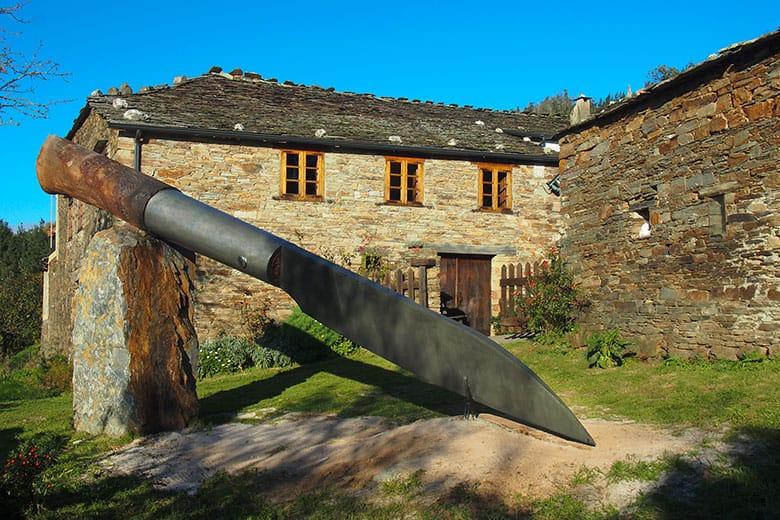
In Los Oscos there are two other good examples of interesting and interactive museums. On the one hand, the Bread Ecomuseum, in Santa Eufemia, in Villanueva de Oscos, which shows the complete cycle of bread making, from sowing the cereal to baking, harvesting, milling and kneading. In other words, it is a real treat to travel back to the origins of natural and healthy food.
On the other hand, the Marqués de Sargadelos Birthplace Museum, located in the council of Santa Eulalia de Oscos, and more specifically in Ferreirela de Baxo, is dedicated to the life and work of this industrial and enlightened merchant, who in the late 18th century built one of the first cast-iron foundry and earthenware factories in Spain in Sargadelos (Cervo, Lugo).And an interesting piece of information for you is that this museum organises a multitude of workshops for children and adults, especially in the summer.
What's more, this region is the ideal place to enjoy live craftsmanship. In both Taramundi and Los Oscos there are different cutlery and knife workshops that you can visit.

Another deeply-rooted craft in the area is that of the loom, and in Santalla, capital of Santa Eulalia de Oscos, you can visit Irene's loom to see how this ancestral textile tool is used.
But if you prefer an even more interactive leisure activity, Artesanamente offers a host of workshops and courses for learning traditional trades: beekeeping, forging, cutlery, natural cosmetics, organic soaps, mushroom cultivation, craft beer, cheese and bread making, or an introduction to the knowledge of traditional plants, among other options.
For its part, the family company Duxemiel offers you beekeeping products and invites you to discover the world of bees through Apitourism, a very popular activity in Los Oscos, which consists of, once you are equipped like a real beekeeper, going to the beehive area to see them in situ, as well as the surrounding area. The activity ends with a tasty tasting of beehive products. It is two hours of interesting activity in the village of Caraduxe, in Santa Eulalia de Oscos.
Obviously, by now, you will have realised that you are in a magical land, and if you feel like it, you can see for yourself in the river Eo. A river of great natural beauty, environmental excellence and great possibilities for outdoor sports.
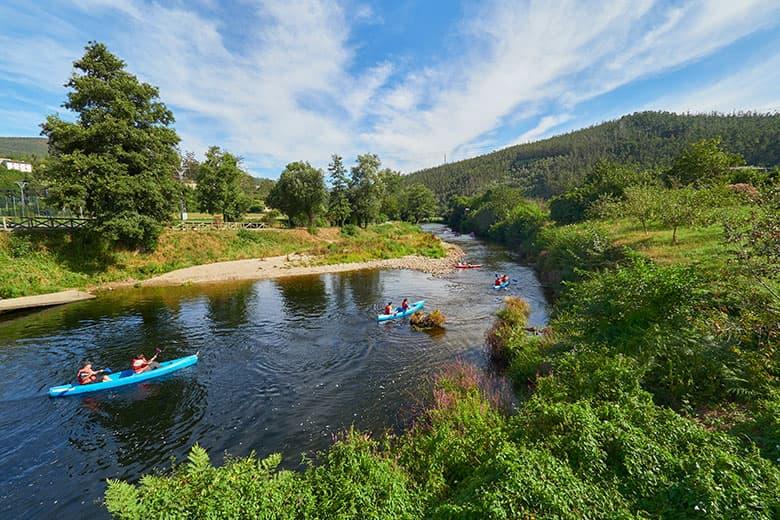
Canoeing down the river Eo, from San Tirso de Abres to Vegadeo or Castropol, you will experience very different sensations in its different sections.
It will be another way of approaching nature and getting to know the region from another point of view. A way of interpreting the landscape of this Biosphere Reserve, these descents will be another of your must-do's!
But as if that weren't enough, you can also explore the landscapes of this land on horseback, with the company Equusfera.
As you'll see, there's no time for boredom in this region!
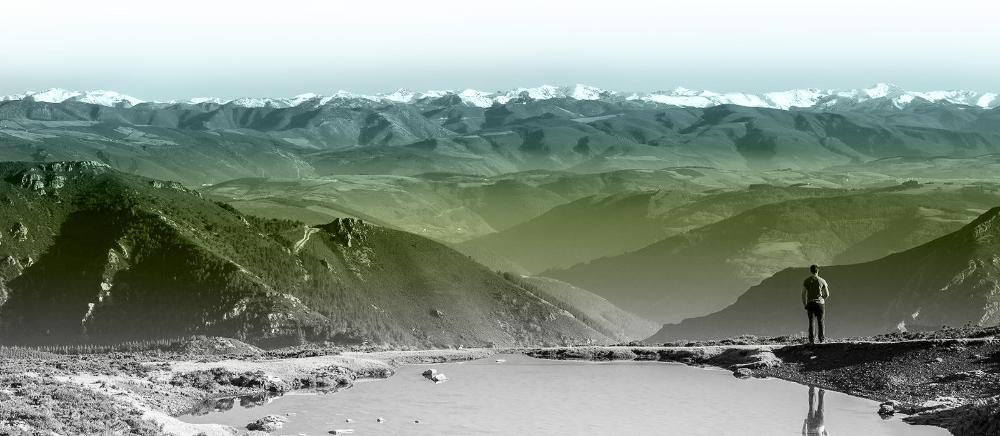
Subscribe to our newsletter and take advantage of offers, discounts, and news
Subscribe


